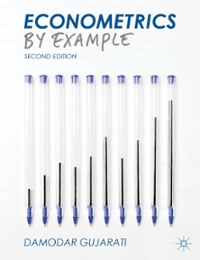

Help help...
Q. Use this question to demonstrate your lmowledge about empirical methods in Labor Economics. For each part, be as precise and comprehensive as possible You are trying to assume the causal impact of college education on labor market outcomes. As an initial specication. you estimate with 0L3. including a dummy variabie for \"College Graduate" aswell as several control variables. Your focus is on the coefcient on College Graduate. You have data on many acts of siblings; where for each person you know their education level, labor market outcomes, wlm is related to whom, and each individual's covariates. A. Describe the \"standard reasons" why we should be concerned about biased coefficients from estimating by OILS. B. What problems with 0L3 will propensity-score matching help to solve? What problems will it not help to solve?I A colleague suggests adding \"family xed effects\" toyour specication. In what key ways does this change the nature of the identifying variation? What types of biases do famiiy xed effects help to remove? What are some ways that this strategy couid still lead to biased results? Are there reasons why this strategy could increase the bias? Describe why or why not. What are the reasons why this strategy might not lead to biased estimates but still give different results than ULS estimates? C37\"??? \fQuestion 1 a} As usual, the EC is given by 6 5 =a+aq[a}=5+' m 1.!- b] Suppose we are in period t. The measure of workers who have been unemployed for exactlyr one period, are simply the workers who lost their job in t 1. In steady state1 that number is equal to {I u'. The measure of workers who have been unemployed for two periods1 are those who lost their job in t 2, and were unsuccessful in nding a job in t I. That number is equal to {1 le-7U 913W\"- The measure of workers who have been unemployed for three periods, are those who lost their job in t 3, and were unsuccessful in nding a job both in t 2 and t 1. That number is equal to {1 \"NH 34(9112: and so on. As a verication that this reasoning is eorrect1 sum up all these workers to get 5 {I- weigh again" = {1 uy = 1599(3}: 1:. i=0 V = -t+q{9]1+[1 - 99(9)}1'3 {9] pwT+,3{l5}J. {3] L. H














